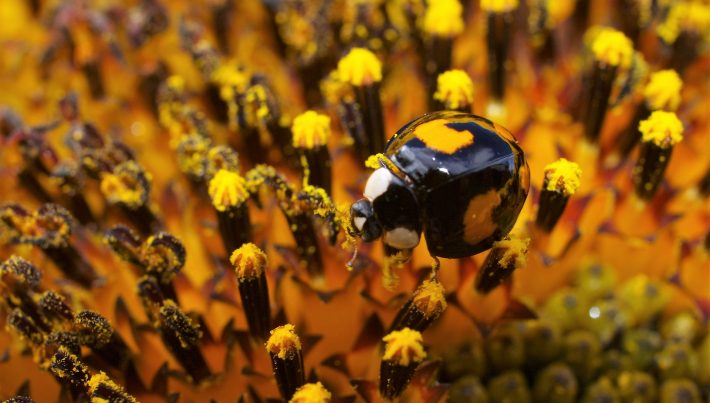Flowering wild plants to promote beneficial insects in the field
Agroscope press release.
Research published in Journal Applied Ecology details which flowering plants are used by pollinators and beneficial insects as food sources over the course of the year.

Pollinators and beneficial insects contribute to a rich harvest in many crops. But in agricultural crops these insects do not always find enough food. Agroscope experts have shown for the first time which flowering plants are especially important for pollinators and beneficial insects in the course of the year. Around two thirds of the pollen in these insects’ food comes from wild plants.
Wild bees help to pollinate agricultural crops. However, crops do not bloom all year round: intensively managed meadows, for example, turn into flowerless deserts for pollinators when they are mowed. Then wild bees need other floral food sources.
Beneficial insects such as ladybirds and lacewings feed on insect pests. But many beneficial insects complement their diets with “vegan” food during certain life stages. Whereas the larval stages of ladybirds and lacewings predate voraciously on aphids and other pests, the adult insects depend on nectar and pollen from flowering plants. For farmers to benefit from natural pest control, the adult beneficial insects need suitable food plants. Only in this way can they contribute to the next generation of voracious larvae.
Trees in spring, flowers in summer
But which other food sources are important? And when exactly are they visited by pollinators and beneficial insects?
Experts from Agroscope, INRA and the Universities of Berne and Koblenz-Landau have shown in detail for the first time which flowering plants are used by wild bees and beneficial insects as food sources in the course of the year. In spring, they mainly need flowering trees such as maple, oak, willow and wild cherry. In summer, flower-rich meadows are in demand.
According to the study, the insects mainly use floral resources of flowering plants from biodiversity promotion areas and semi-natural habitats such as extensively managed meadows, hedges, forest edges, flower strips and margins. Margins are narrow areas between two habitat types, such as shrubs between forest and meadow.
For these reasons, it is not surprising that around two thirds of the pollen in the food of wild bees and beneficial insects comes from wild plants. Wild bees and other beneficial insects such as natural enemies of crop pests are therefore dependent on a wide range of different flowering habitats that bloom at different times in agricultural landscapes. Only in this way can the insects provide valuable services – pollination and pest control – for farmers. The study provides the basis for shaping agricultural landscapes accordingly.
Read full study:
, , , et al. Seasonal shifts and complementary use of pollen sources by two bees, a lacewing and a ladybeetle species in European agricultural landscapes. J Appl Ecol. 2019; 00: 1– 12. https://doi.org/10.1111/1365-2664.13483
Media contacts:
Matthias Albrecht and Felix Herzog
Agroscope, Reckenholzstrasse 191, 8046 Zürich
Agroscope Media Office
media@agroscope.admin.ch
+41 58 466 88 62
Like what we stand for?
Support our mission and help develop the next generation of ecologists by donating to the British Ecological Society.